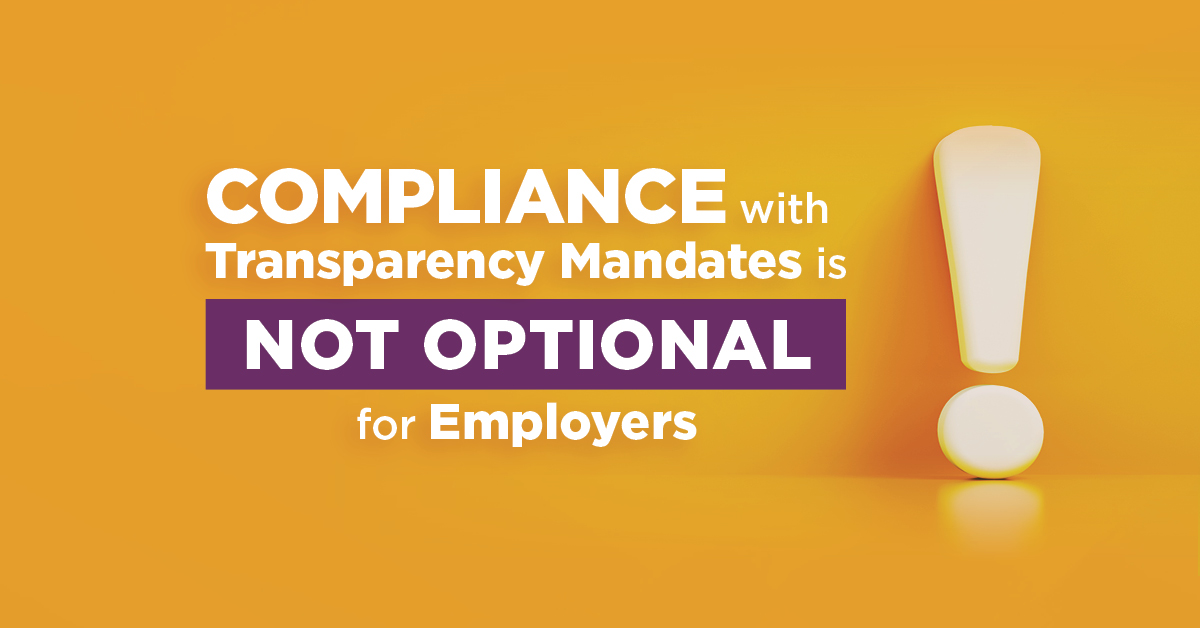
The Implications of Non-Compliance Can Be Dire
The phrase “transparency fines are coming” is now a moot point, because—like it or not—transparency fines are here, and enforcement has begun.
With the pivotal July 1 deadline to meet the Machine-Readable Files (MRFs) provision of the Transparency in Coverage Rule now behind us, a shocking number of employer groups, advisors, and plan administrators are still scrambling to ensure compliance moving forward.
Originally set for January 1, 2022, the enforcement deadline for posting MRFs was moved to July 1 by the Biden Administration to give companies working in earnest more time to achieve compliance. That said, no party involved can say they didn’t have ample warning.
What Now?
The purpose of the MRF requirement is to allow application software and analytics companies to ingest and create useful products and services to help manage healthcare costs.
Per the rule, employer-sponsored group health plans and health issuers MUST disclose price and cost-sharing information to healthcare consumers by producing plan-specific MRFs that are publicly accessible for free on the plan’s website and updated no less frequently than monthly. Required MRFs include the following:
Negotiated Rate File: All applicable rates (negotiated rates and fee schedules) with in-network providers
Allowed Amount File: Data outlining the historical allowed amounts for covered items and services provided by non-participating providers
Prescription Drug File*: Negotiated rates and historical net prices for prescription drugs furnished by in-network providers
These files serve as a foundation for innovative solutions providers to furnish members with previously unavailable pricing information, allowing healthcare consumers to easily compare costs and estimate of any out-of-pocket expense they will have to pay.
All MRFs must use a standardized format, and consumer access cannot require a user account, password, or other personal identifying information.
The True Impact of Non-Compliance
At the end of the day, it’s the employer that will be left holding the bag, facing substantial, potentially crippling financial penalties of $100 per affected member, per day for non-compliance. For a group of 1,000 employees, that means a potential DAILY fine of $250,000.
Employers are relying on their benefits advisors and plan administrators, as they should, to ensure that they are in full compliance. This includes publication and access of the now required MRFs.
Advisors who provide ill-informed guidance, or no guidance at all, regarding these mandates will and SHOULD be held accountable. This will quickly lead to an erosion of trust and, ultimately, a loss of business. Likewise, TPAs, ASOs, and carriers who either can’t provide, or delay in providing, the required MRFs or a compliant cost-comparison shopping tool may lose the confidence of their employer group customers.
The TALON Approach
The intent of the of the MRF mandate is to leverage the data elements within these files and ultimately produce one negotiated rate for each procedure-provider pair within the cost-compliant shopping tool, which would be subscriber-specific, based on their personal summary of benefits. This requirement presents a monumental, highly complex information technology challenge.
By combining extensive data sources, including the MRFs, with the use of machine learning algorithms, TALON has amassed a data warehouse of over 3.7 billion annual claims. Our data includes the allowed amounts paid from insurers and payers to providers for specific procedures. Additionally, through continuous refinement of machine learning models and statistical analyses, TALON has developed added depth of knowledge concerning what specific providers typically charge above and beyond basic procedures.
TALON has the unique ability to ingest multiple rate information data feeds from network partners, PBM partners, RBP partners, bundled payments partners/providers, and direct contract providers and extract pricing data which is then processed and audited by TALON’s rules engines and organized to present price data on a per-employer group and per plan basis to ensure display of only one valid price for each provider of each specific service within an intuitive cost-comparison shopping tool.
TALON has mastered this extremely complex process through modern machine learning algorithms and statistical analyses and can confidently identify trends and anomalies across a massive volume of data that is constantly in motion.
By seamlessly integrating with existing architectures, TALON provides a simple and streamlined means for employer groups to achieve full compliance with BOTH current and upcoming transparency mandates, all without hassle or disruption. TALON presents a win-win scenario for employers, brokers/advisors, and plan administrators.
Coming Next…
By January 1, 2023, every employer must provide employees, beneficiaries, and enrollees (or their authorized representative) with an online shopping tool featuring 500 shoppable services—as identified by the Department of Labor, Department of Health and Human Services, and Department of Treasury—and provide personalized out-of-pocket-cost information and the underlying negotiated rates for all covered health care items and services.
A year later, by January 1, 2024, all other procedures, prescription drugs*, durable medical equipment, and any other item or service must be published, as well.
*Pending further rulemaking
